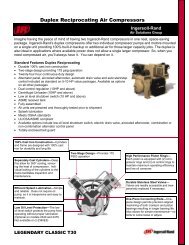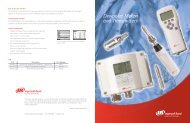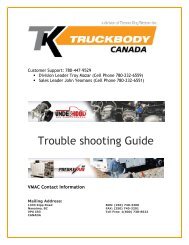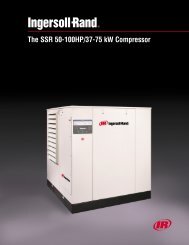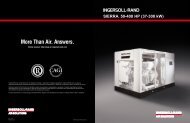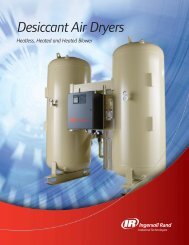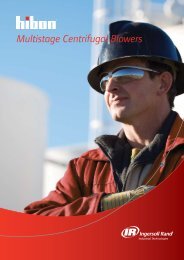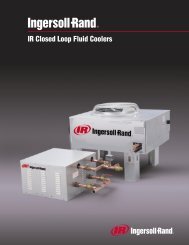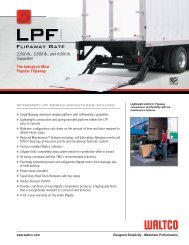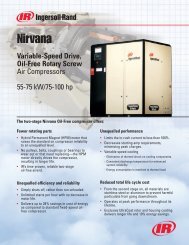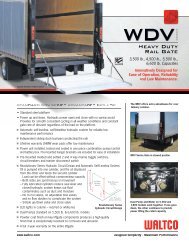Create successful ePaper yourself
Turn your PDF publications into a flip-book with our unique Google optimized e-Paper software.
QUALIFICATIONS FOR AND CONDUCT OFOPERATORS AND OPERATING PRACTICESor neutral position and all personnel are in theclear.6. If power fails during operation, the operator shall:A. Move power controls to the "OFF" or neutralposition.B. Land the suspended load and boom, ifpractical.7. The operator shall be familiar with theequipment and its proper care. If adjustments orrepairs are necessary, the operator shall reportthe same promptly to the appointed person, andshall also notify the next operator.8. The operator at the start of each shift shall testall controls. If any controls do not operateproperly, they shall be adjusted or repairedbefore operations are begun.9. Stabilizers shall be visible to the operator whileextending or setting unless a signal personassists operator.OPERATING PRACTICES/HANDLING THELOAD1. Size of load.A. No crane shall be loaded beyond the ratedload except for test purposes.B. The load to be lifted is to be within the ratedload of the crane and its existingconfiguration.C. When loads that are not accurately knownare to be lifted, the person responsible forthe job shall ascertain that the weight of theload does not exceed the crane rated load atthe radius at which the load is to be lifted.2. Attaching the load.A. The load shall be attached to the hook bymeans of slings or other devices of sufficientcapacity.B. Hoist rope shall not be wrapped around theload.3. Moving the load.The operator shall determine that:A. The crane is level and, where necessary,the vehicle/carrier is blocked properly.B. The load is well secured and balanced inthe sling or lifting device before it is liftedmore than a few inches.C. Means are provided to hold the vehiclestationary while operating the crane.D. Before starting to lift, the hook shall bepositioned over the load in such a manneras to minimize swinging.E. During lifting care shall be taken that:1. There is no sudden acceleration ordeceleration of the moving load.2. Load, boom or other parts of the cranedo not contact any obstruction.F. Cranes shall not be used for dragging loadssideways.G. This standard recognizes that telescopicboom cranes are designed and intended forhandling materials. They do not meetpersonnel lift or elevator requirements.Therefore, no lifting, lowering, swinging ortraveling shall be done while a person is onthe hook or load. Hook attached suspendedwork platforms (baskets) shall not be usedwith cranes covered by this standard.Crane manufacturer must approve workplatforms attached to the boom.H. The operator should avoid carrying loadsover people.I. When the crane is so equipped, thestabilizers shall be fully extended and set.Blocking under stabilizers shall meet therequirements as follows:1. Strong enough to prevent crushing.2. Of such thickness, width and length asto completely support the stabilizer pad.J. Firm footing under all tires, or individualstabilizer pads should be level. Where sucha footing is not otherwise supplied, timbers,cribbing, or other structural members todistribute the load so as to not exceedallowable bearing capacity or theunderlying material should provide it.K. In transit, the boom shall be carried instowed position.L. When rotating the crane, sudden startsand stops shall be avoided. Rotationalspeed shall be such that the load does notswing out beyond the radius at which itcan be controlled.M. The crane shall not be transported with aload on the hook unless recommended bythe manufacturer.2-5.08/19/05





